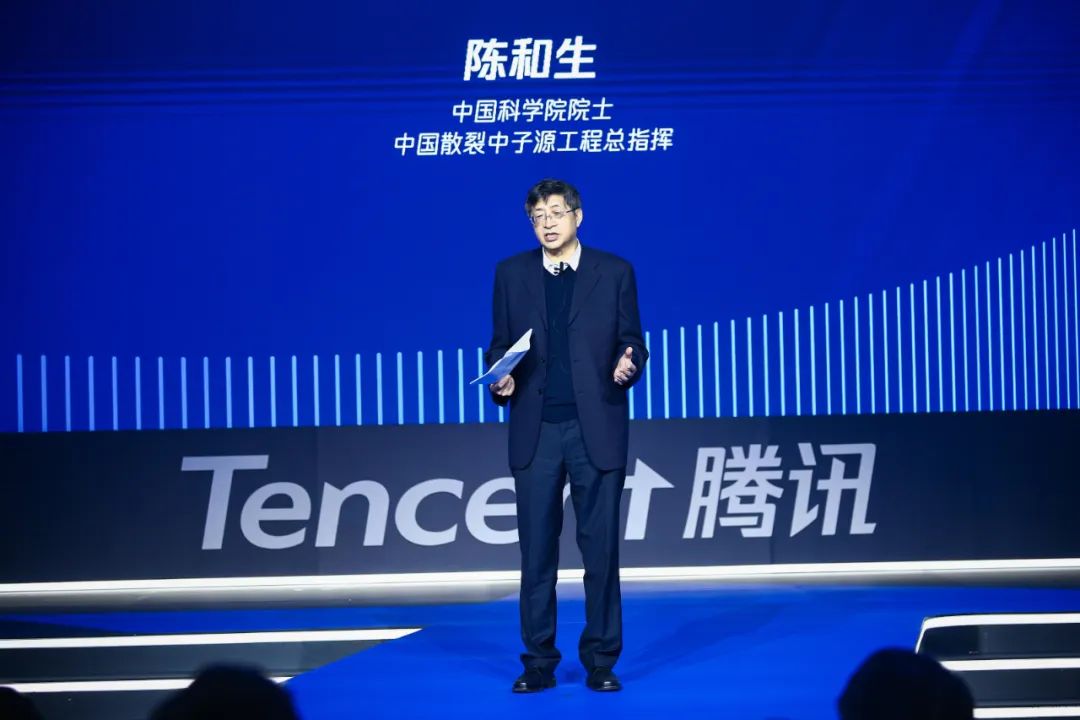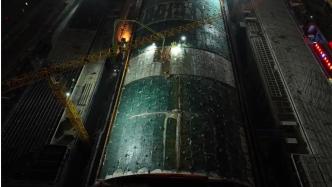
[Editor's note] Nearly 20 years ago, as the "national important weapon", the spallation neutron source was not willing to settle because it "does not generate GDP and does not pay taxes". Now, as the country vigorously promotes technological innovation , to promote the construction of major scientific and technological installations, there is another tendency in some places: low-level redundant construction. In this regard, Chen Hesheng, academician of the Chinese Academy of Sciences and chief commander of the China Spallation Neutron Source Project, warned that it is necessary to avoid the "Great Leap Forward" or low-level redundant construction of major scientific and technological infrastructure construction.

Chen Hesheng, academician of the Chinese Academy of Sciences and chief commander of the China Spallation Neutron Source Project
In 1999, I was the director of the Institute of High Energy Physics, Chinese Academy of Sciences. We first proposed the construction of the China Spallation Neutron Source, because it is very important to many key areas in the national development strategy and frontier research in basic science.
In 2000, as the main author, I compiled "China's High Energy Physics and Advanced Accelerator Development Goals" - which planned the construction of a spallation neutron source, and submitted it to the 7th meeting of the National Science and Education Leading Group, which was agreed in principle by the Science and Education Leading Group . Then we started looking for the location of the spallation neutron source.
"China's large scientific installations should not only be concentrated in Beijing and Shanghai"
From 2003 to 2005, we first considered Beijing, because Beijing had the largest number of users, and the construction unit, the Institute of High Energy Physics, was also in Beijing. But when we were in Beijing, we found Yanjiao and Daxing from Changping, but we couldn’t find a place willing to accept the spallation neutron source. It's of no use afterwards."
The turning point came in February 2006, when I went to Guangzhou to attend a meeting of the Guangdong Provincial Development and Reform Commission. At that meeting, I talked with a deputy director of the National Development and Reform Commission. She said that Guangdong Province intends to introduce large scientific devices, which was a very far-sighted development idea at the time.
Prior to this, Lu Yongxiang, the then president of the Chinese Academy of Sciences, said in high energy physics: China's large scientific installations should not only be concentrated in Beijing and Shanghai, but should be optimized, especially in Guangdong. He believes that the reform and opening up in the Pearl River Delta region has done very well, with extensive international exchanges and strong economic strength, which can support the development of large scientific devices. At the same time, the Pearl River Delta region has urgent requirements for the development of science and technology and industrial upgrading. At that time, he told me, "You should consider the development of the Pearl River Delta region." After I discussed this idea with the leaders of the Guangdong Provincial Development and Reform Commission, the two sides hit it off and reached an agreement soon.
In May 2006, I led the team to Zhuhai, Guangzhou Luogang and Dongguan to select locations, and finally selected Dongguan.
"To become the main scientific platform supporting scientific and technological innovation in the Bay Area"
In October 2011, the project started. It took us six and a half years to complete the construction of the spallation neutron source as planned, making China the fourth country in the world with a spallation neutron source. Many critical bottlenecks provide important platforms.
Its meaning is very important. Guangdong Province signed agreements with the Chinese Academy of Sciences, the Institute of High Energy and Dongguan City respectively. At that time, the state invested 1.866 billion yuan, and the match between Dongguan City and Guangdong Province was close to 1:1.
At that time, there was no concept of the Guangdong-Hong Kong-Macao Greater Bay Area. After our completion, it has become a major scientific platform supporting technological innovation in the Guangdong-Hong Kong-Macao Greater Bay Area.
On July 27, 2020, the National Development and Reform Commission approved the Guangdong-Hong Kong-Macao Greater Bay Area Comprehensive National Science Center Pioneer Start-up Area, one is Songshan Lake, and the other is Shenzhen Guangming New District. Songshan Lake has benefited from the construction of the spallation neutron source. Guangming New District is close to Songshan Lake, separated by a mountain. I think it is not accidental to choose it.
After the spallation neutron source was completed, it also received strong support from Guangdong Province. Guangdong Province, Dongguan City and Shenzhen City invested nearly 1 billion yuan to build 8 experimental terminals—only 3 were built at that time. These experimental terminals have played a very important role in meeting user needs as soon as possible and facing the country's strategic needs.
Now, due to fruitful results and extremely strong user needs, the second phase of the spallation neutron source project has been included in the national "14th Five-Year Plan" major scientific and technological infrastructure development plan, the feasibility study report has been approved, and construction will begin soon.
"Precious wealth for the future development of the Greater Bay Area"
I am thinking that such a cooperation not only brings about the spallation neutron source, but more importantly, the Dongguan Research Department of the Institute of High Energy Physics, Chinese Academy of Sciences has formed a high-level and professional scientific research team. , engineering technology and technical support, and management team are valuable assets for the future development of the Guangdong-Hong Kong-Macao Greater Bay Area.
Large scientific installations are large and complex scientific systems that provide extreme means for exploring the unknown world, discovering natural laws, realizing technological change, and are the material basis for breaking through the frontiers of science and solving major scientific and technological issues for economic and social development and national security. Actively planning and deploying the construction of large scientific installations is of great significance for enhancing my country's scientific and technological innovation capabilities, realizing high-level scientific and technological self-reliance and self-reliance, and realizing the transformation from a scientific and technological power to a technological power.
Large scientific facilities have the characteristics of large scale, long construction period, and large scientific teams involved. They can be roughly divided into three categories: one is the frontier of basic science, such as colliders, nuclear physics research facilities, plasma fusion and astronomical telescopes; The second category is large-scale scientific platforms, which do not serve scientific research in a certain field, but platforms such as synchrotron radiation, spallation neutron sources, and free electron lasers. The third category is public welfare facilities, such as seabed observation, earthquake observation facilities, etc., which are also very important. The spallation neutron source belongs to the second category of facilities, and its traction is particularly strong.
These major scientific and technological infrastructures are important units in the national scientific and technological innovation system. High-tech industrial parks are often formed around major scientific infrastructures. For example, Silicon Valley in the United States is closely related to Stanford University, University of California, Berkeley, Stanford Linear Accelerator Center (now "SLAC National Accelerator Laboratory"), and Berkeley National Laboratory. Japan's Tsukuba Science City is closely related to the Japan Institute of High Energy Physics and the Japan Spallation Neutron Source.
At the same time, major scientific and technological infrastructure also strongly promotes the development of education, such as the Berkeley National Laboratory and the University of California, Berkeley.
To avoid low-level redundant construction of major scientific and technological infrastructure
Big scientific installations are very important to the technological innovation of the Guangdong-Hong Kong-Macao Greater Bay Area.
In July 2020, the National Development and Reform Commission and the Ministry of Science and Technology approved Songshan Lake and Guangming New District, the first start-up area for the Comprehensive National Science Center in the Greater Bay Area. In March 2021, the national "14th Five-Year Plan" proposed to support Beijing, Shanghai, and the Guangdong-Hong Kong-Macao Greater Bay Area to form an international scientific and technological innovation center, and to establish four comprehensive national science centers in Shanghai Zhangjiang, Anhui Hefei, and Beijing Huairou Greater Bay Area .
I think this deployment has brought great development opportunities to the technological innovation of the Greater Bay Area, but it is also a huge challenge.
I would like to talk about my views from my experience of more than ten years of technological innovation in the Bay Area.
First of all, compared with Beijing, Shanghai, and Hefei, there is a big gap between science and innovation centers in the Bay Area, including large scientific installations, especially scientific research teams, technical levels, and universities.
Beijing, Shanghai, and Hefei are all local governments planning and building comprehensive national science centers. The comprehensive national science center in the Greater Bay Area covers many local governments.
The two pioneer areas belong to two cities, separated by a mountain. The key is to have unified planning and coordination, including major scientific and technological infrastructure. Truly complement each other's advantages, unite the strong, and concentrate on doing big things, instead of repeating at a low level.
Compared with the three major bay areas in the world, the Guangdong-Hong Kong-Macao Greater Bay Area has more shortcomings and greater gaps. For example, the Greater Bay Area in New York has Brookhaven Laboratory, advanced light sources, and Ivy University; San Francisco Bay There are Berkeley Laboratory, Stanford University, and University of California, Berkeley in the area; the Tokyo Bay Area has world-renowned research institutions and universities such as Japan Institute of High Energy, Japan Spallation Neutron Source, Tsukuba Park, University of Tokyo, Waseda University, etc.
If the Guangdong-Hong Kong-Macao Greater Bay Area wants to form a scientific and technological innovation system, it must vigorously develop large scientific installations and cutting-edge scientific research.
Major scientific and technological infrastructure is characterized by large social impact, great demonstration and radiation effects, large investment, complex technology, and long cycle. Nearly 20 years ago, the spallation neutron source could not find a place willing to receive it. But now the country vigorously promotes scientific and technological innovation and promotes the construction of major scientific and technological installations.
Now there is another tendency: low-level redundant construction. This phenomenon is more prominent, and it is also true in the Bay Area.
For the construction of large scientific installations in the bay area, first of all, I suggest strengthening the top-level design, so that the whole bay area is a game of chess, and the whole country is a game of chess.
The country's major scientific and technological infrastructure should be included in the national major scientific and technological infrastructure planning for unified deployment and construction. We must respect the laws of science and avoid the "Great Leap Forward" or low-level redundant construction of major scientific and technological infrastructure.
At the same time, the enthusiasm of local governments should be brought into play. We suggest that neighboring provinces and cities can jointly undertake the tasks of major scientific and technological infrastructure deployed by the state and concentrate their efforts on major tasks.
(Original title ""Does not generate GDP, does not pay taxes", this important weapon of the country has been hard to find a place to settle", the author Chen Hesheng, academician of the Chinese Academy of Sciences, commander-in-chief of the China Spallation Neutron Source Project, according to Zhao Guangli, a reporter from China Science Daily His keynote speech at the Greater Bay Area Science Forum Bay Area Science and Technology Innovation Summit)
